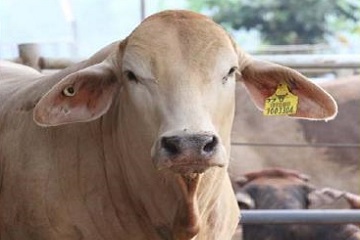A Group of IPB Researchers: The Physiological Response of Friesian Holstein (FH) Cow Fed by Oil Palm Stems

Livestock production will increasingly be affected by external factors. These include surging demands for animal products and struggling supplies of feed raw materials, resulting from the competition for natural resources and trade barriers. The availability of feed sources is one of the obstacles that hinder the development of dairy cattle production in Indonesia. Various efforts have been made, such as increased use of forage land with a multilevel system, utilization of agricultural waste as a source of forage, and the provision of alternative feed. Utilization of palm oil by-product such as palm fronds, leaves, empty fruit bunches (EFB), fiber fruit juice (FFJ), palm kernel cake (PKC), palm oil sludge (POS), and palm leaves (DPS) as the source of energy and protein for livestock business is an efficient effort to make a new opportunities in term of economical and beneficial product that will reduce environmental pollution. The by-product or waste from oil palm has the potential to become an alternative source of feed for the development of livestock business.
Accordingly, a group of researchers of the Department of Animal Production and Technology, of the Faculty of Animal Husbandry, of Bogor Agricultural Institute (FAPET IPB), namely Afton Atabany; A. Ghiardien of the Animal Science and Technology Study Program, of School of Graduate Studies of IPB (Sekolah Pascasajana), and B.P. Purwanto of the Directorate of Diploma Program of IPB, carried out the research program on the physiological response of Friesian Holstein (FH) lactation cow with substitution of palm leaves feed with different amount.
"Utilization of waste oil palm plantations become very potential to be one alternative source of feed providers for dairy cattle in Indonesia," said Afton.
The team conducted the experiment using the first fifth lactation FH cattle in the fifth month of four 24-36 month old livestocks in Integrated Service Unit (UPT) of Breeding Center of Animal Husbandry, Kampar Province of Riau Province. The cow is reared and fed by king grass (RR) and palm leaf (DPS).
This study observed the physiological response of treated cows such as rectal temperature, body temperature, respiratory rate and heart rate. And also the environmental factors such as air temperature and humidity.
From the results of this experiment the researcher explained that the number of different palm substitution in dairy cattle feed during the study did not significantly affect the rectal temperature, body surface temperature and dairy cow body temperature. Rectal temperatures during palm-sheath treatment range from 38-39 degrees Celsius. However, substitution of palm fronds in different amounts significantly affects the heart rate of dairy cattle. Heart rate obtained in 75 percent substitution of palm-oil midrib (72.15 times per minute) was greater than controls (66.05 times per minute), 25 percent (70.92 times per minute) and 50 percent (69 , 26 times per minute).
"The high frequency of the pulse, can be caused by the high heat load from inside and outside the body. Low quality feed causes the process of fermentation in the rumen slower, so the heat generated from energy for the body's metabolic processes is lower and affects the increase in pulse rate. This is due to the functions of protein is to provide energy for the body's metabolic processes," he said.
The researchers explained that substitution of chopped fresh palm stem in different percentages in animal feed has no significant effect on the respiration rate. "The increase in the respiration rate occurs is the cow reaction to changes in the temperature of the environment and the impact on the increase of heat production in the body of livestock," he said.
Physiological responses (body temperature, heart rate, respiration rate, rectal temperature except heart rate) are not influenced by the treatment of different amounts of palm stem substitution and are generally normal. Their physiological responses in general have increased and decreased following changes in environmental conditions during the study, which tend mild to moderate stress. (Wied)



